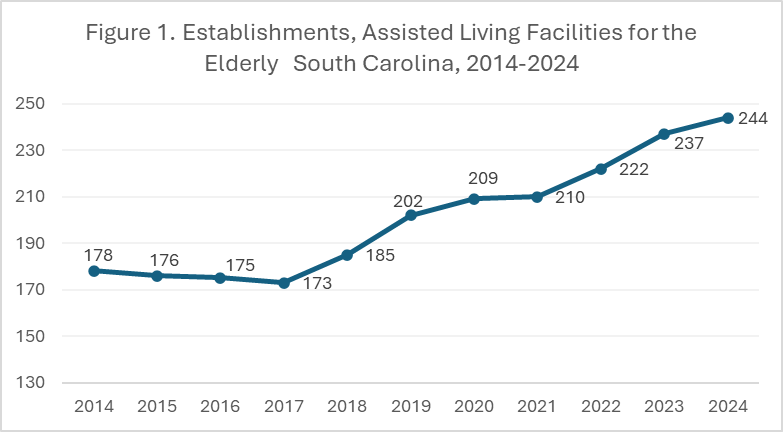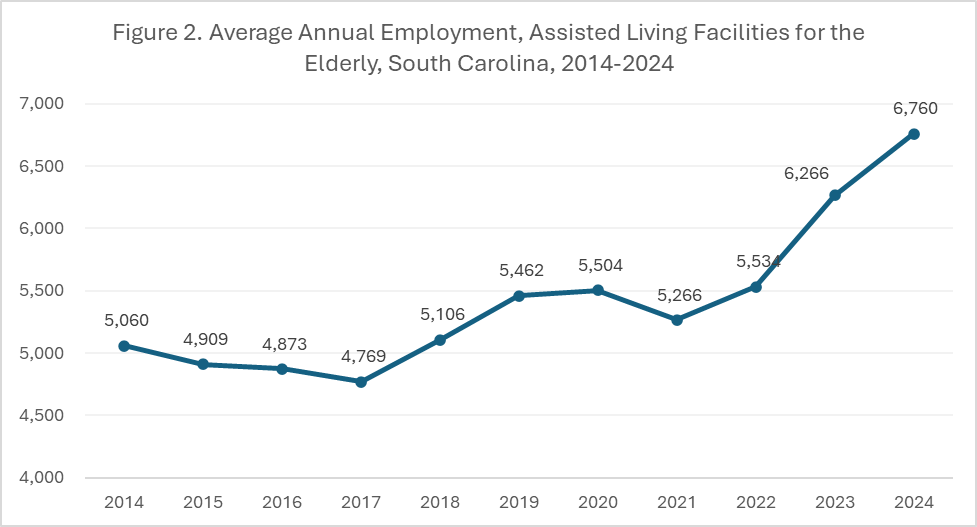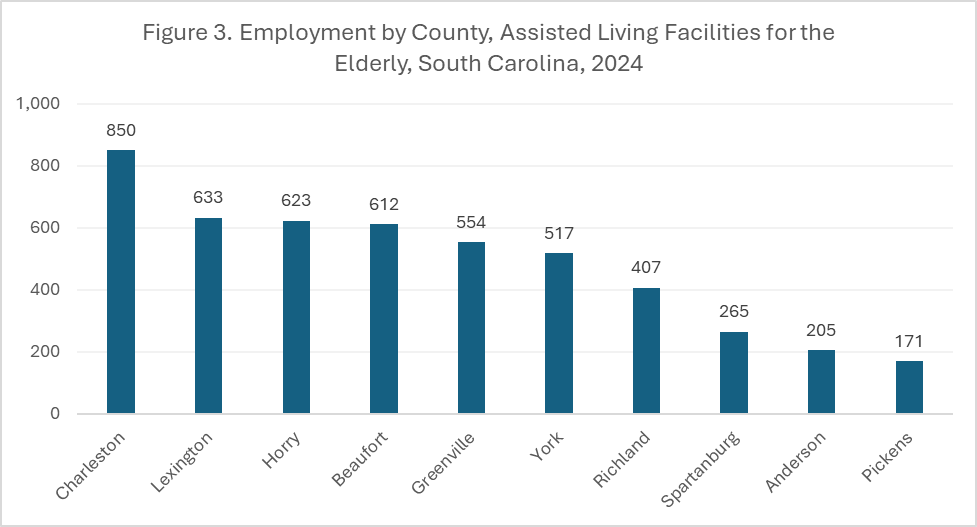MyBenefits
Apply for and certify your claim here.
 The Official Web Site of the State of South Carolina
The Official Web Site of the State of South Carolina
Unemployment Insurance claimants: Monday, October 13, 2025, is a bank holiday, which may cause delays in payments. Please check with your financial institution for more information.
Recognizing National Assisted Living Week: An Overview of South Carolina’s Assisted Living Industry
By Lainey Stalnaker, Data Analytics Writer

September 7 through 13 was National Assisted Living Week, a time to highlight the role of assisted living facilities in caring for our elderly and disabled populations. In recognition of that week, we are spotlighting the assisted living industry in South Carolina. Assisted Living Facilities for the Elderly, as defined by the North American Industry Classification System (NAICS),[1] provide residential and personal care services for the elderly and individuals who are not able to live independently, but they differ from nursing homes in that they do not provide 24-hour on-site nursing care. The industry is expected to grow significantly in the coming years. Annual employment is forecast to increase 2.1 percent and the projected annual job demand will exceed 1,000.[2]
In 2024, the number of assisted living establishments in South Carolina reached 244. The number of establishments has increased every year since 2017, following a period of stagnation, which points to a recent increase in demand for assisted living facilities. Figure 1 shows establishment growth over the last decade.[3]

Employment in the industry has also grown—particularly in the last three years. Employment fell from 2020 to 2021 but quickly recovered, reaching a peak of 6,760 in 2024.

Geographically, the assisted living industry is concentrated in coastal counties. At the top of the list, an average of 850 people were employed in the industry in Charleston County in 2024. Lexington County came in second at 633. In Horry and Beaufort Counties, employment averaged 623 and 612, respectively. Greenville County rounded out the top five at 554. See Figure 3 for the top ten. Notably, Beaufort County had a location quotient of 2.68, meaning employment in the assisted living industry as a share of total employment was 2.68 times larger in Beaufort County than in the nation as a whole.
This may reflect the preferences of individuals who have left the workforce and others seeking assisted living arrangements. South Carolina has one of the highest domestic migration rates in the country and continues to be a popular relocation destination for retirees. Coastal cities are particularly attractive to movers.

Assisted living facilities provide a vital service to our elderly and disabled populations by allowing them to age with dignity, even if they are unable to live independently. As South Carolina’s population continues to age, this industry is likely to grow in size and importance.
[1] https://www.naics.com/naics-code-description/?code=623312 These facilities are “primarily engaged in providing residential and personal care services (i.e., without on-site nursing care facilities) for (1) the elderly or other persons who are unable to fully care for themselves and/or (2) the elderly or other persons who do not desire to live independently. The care typically includes room, board, supervision, and assistance in daily living, such as housekeeping services.” Note that this industry classification may differ from other methods of categorizing these facilities, resulting in varying counts for the number of establishments, depending on the source.
[2] “Industry Spotlight – Assisted Living Facilities for the Elderly, South Carolina." JobsEQ, Chmura Economics & Analytics, 2014-2024, jobs-eq.com. Accessed 9 September 2025.
[3] Establishment and employment figures come from the Bureau of Labor Statistics’ Quarterly Census of Employment and Wages.